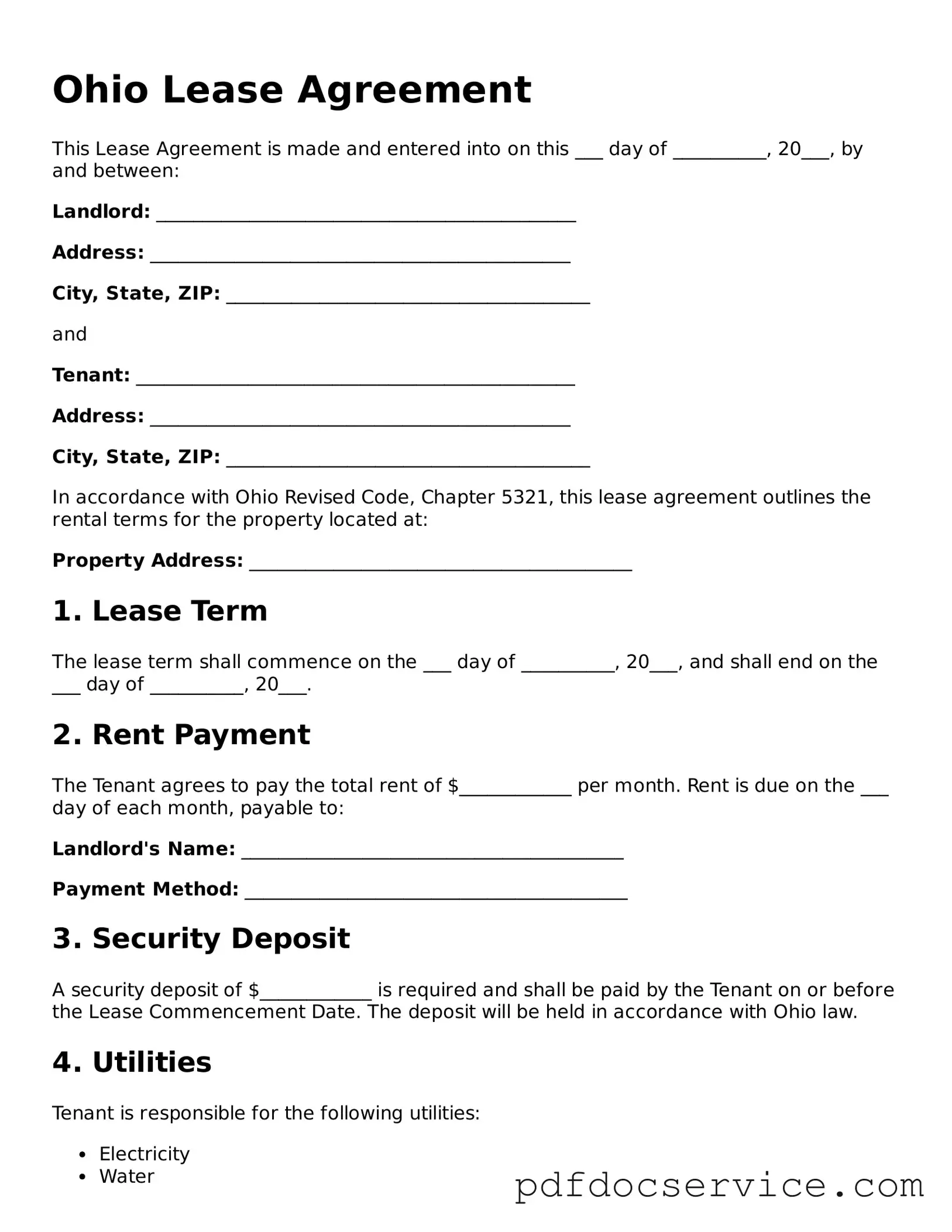Printable Lease Agreement Template for Ohio
The Ohio Lease Agreement form is a legal document that outlines the terms and conditions between a landlord and a tenant for renting residential or commercial property in Ohio. This agreement serves to protect the rights and responsibilities of both parties, ensuring a clear understanding of rental obligations. Understanding this form is essential for anyone involved in the leasing process in Ohio.
Open Lease Agreement Editor
